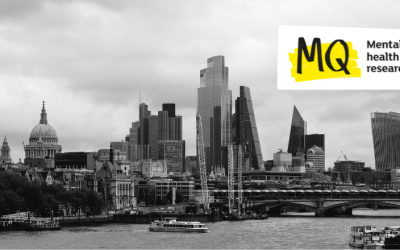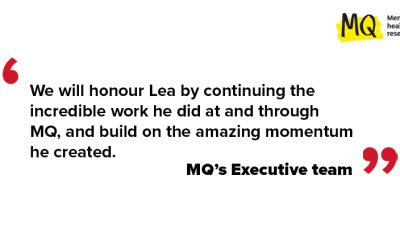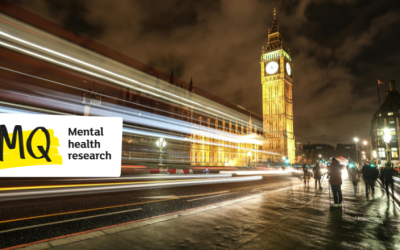Whether you drool over fashion week in February, dress up for Halloween in October, or enjoy putting on a party frock for the Holidays or New Year's Eve, dressing up holds a lot of power when it comes to self-perception. Research has shone a fascinating light onto the power costume can have on our mental health. So, with Juliette Burton's personal story backed up by research, let’s strip away the layers of misconceptions and adorn ourselves in the facts behind the various facades we can all adopt.
Ever since I was a little girl, I've always loved dressing up. Trying on my mother’s clothes from her own previous reinventions of herself led to a love of theatre and subsequently cosplay. This escapism was once viewed as frivolous but is now seen, through my eyes at least, as a survival guide. In fact, it's only since working at MQ that I've started to understand the science behind why I enjoy costume so much.
Clothing and Psychology
The power of costume is apparent in all of our lives. We don’t have to work in theatre to know that a change of clothes can signal something deeper to ourselves and those around us. Wearing a power suit to a job interview, a Little Black Dress on a date, sportswear to the gym, pyjamas to sleep in or indeed the princess dream of a wedding dress; costume permeates our subconscious in these strong ways and in more subtle instances too.
We each of us make subtle non-verbal cues with how we dress, the colours we favour, the fashions we veer towards help us express our internal worlds and help us find our tribe. Consider the power of wearing rainbow shoelaces to help LGBTQAI+ friends find us as a safe space, the power of red lipstick to signal sexual power.
As someone who regularly cosplays and has worked in the arts for many years I know the power a stage show costume can have. When I put on certain make up or a T shirt I only ever wear on stage, I transform. I become an elevated aspect of who I naturally am. And this is something I explore through cosplay and costume.
Colour has a huge impact on our non-verbal signalling. In the animal kingdom red signifies danger but also sexuality and power. Wearing red lipstick or a red dress is a statement that goes far beyond just liking the colour of crimson.
Enclothed Cognition
Research shows that wearing a costume can actually influence your behaviour. Researchers began using the term “enclothed cognition”, to refer to the way clothing influences people’s psychological processes. They found that participants who wore a lab coat described as a doctor’s coat performed better on attention-related tasks compared to those wearing a lab coat described as a ‘painter’s coat’.
However, costume can contribute towards discrimination. A few years ago, many conversations were had around Halloween costumes where people can dress up as a mental health patient or an ‘asylum escapee’. So it’s worth mentioning clearly - mental illness is not a costume. And being aware of the stigma surrounding flippancy is important.
But those with mental health challenges may well know the power a costume or mask can carry.
Whether it's at Halloween, cosplay or in high fashion, costumes can be therapeutic in allowing us to face our fears and indeed our fears may even be disengaged aspects of our own selves. Halloween is an ideal time to demonstrate the fact that costume can give us permission to be someone else… or sometimes to portray an aspect of ourselves we usually keep hidden. Whether that be something more sinister, a shadow self, or something more sexual, as per many women’s costumes, Halloween can give us permission to explore different parts of our identity.
Fashion To Empower or Disempower
Clothing can be used as an empowering tool or a disempowering experience in many settings. Inmates in one prison in Arizona were forced to wear pale pink, use pink towels and sleep on pink sheets. The idea was that pale pink is a placating colour. Unlike red, which causes the heart rate to rise and signal for human nervous systems to be on alert, it placates and disempowers.
Green, as a colour, has the most calming effect on the nervous system. As Kermit the frog says, it’s not easy being green, but it does calm the heart rate which is probably why Kermit has lived so long.
Just like an inmate in a prison, those who experience inpatient psychiatric care also might experience a costume of sorts. The symbolism of wearing a hospital gown may adversely impact wellbeing and chances of recovery as well as increase patient distress and exposure or vulnerability.
I’ve been an inpatient wearing a hospital gown. I can first-hand confirm it is not empowering. I’d love to see how the other patients or doctors behaved had I been dressed in my stage show costumes or my very sexiest Little Black Dress or my cosplay of Harley Quinn… an appropriate character for anyone who knows her backstory.
Equally, I’ve been an inpatient wearing just pyjamas all day for weeks on end (top tip if you’re about to be an inpatient – take far more pyjamas than you think you’ll need). This is partly why using costume on a day to day basis is a part of my empowerment journey. Empowerment and recovery often have a hand in hand development, an intimate and mutual causality.
Ultimately research shows there’s a lot of good to come from expressing oneself through costume. Research shows there’s a lot of identity exploration, empathy and self-acceptance that can come through the potential of using costume. It could even be used as an intervention to improve mental health in young people in educational settings, research suggests.
Cosplay or cos-work at self-acceptance
This time of year is not only an introduction to Halloween but also to cosplay as communities of self-appointed nerds head to comic cons worldwide. Cosplay is in its essence ‘costume play’.
I myself cosplay. This month I have cosplayed as Harley Quinn from Suicide Squad in a bright red custom-made dress with fake machine guns that fire flowers. This character expresses her release from oppression by the patriarchy, abusive relationships with men both past and present. Her release through her anger is expressed in her colourful and balletic release when taking down the powers that be. For me, right now, this character is someone I want to embody.
The psychological transformation of dressing like a character you've adored since childhood is a motivating form of self-acceptance and self-actualisation. Cosplayers say it is one reason playing with costume is fulfilling, the exploration of the identity of a fictional character. Based on research, cosplayers report that the enjoyment of dressing as another identity is the most motivating factor.
When I have cosplayed as gender-neutral characters I was surprised and liberated to understand a more gender-neutral aspect of my own self. Friends commented on how powerful I seemed. And when dressed as a Marvel character who is a blue alien (pictured above, photo by Adam Jacobs - wild_aperture on Instagram) I felt more liberated from my mental illnesses than ever before.
Covered in blue make up I sat in a pub afterwards with people staring at me. Yet I felt more liberated than I usually do, dressed as 'myself'. Those people can think what they like, they might think it’s crazy for me to sit there looking this way but for me, I know crazy. I’ve been sectioned under the mental health act. Crazy is doing the same thing expecting different results. Me painting myself blue and having fun is doing something different and seeing what on earth happens. It’s far more empowering.
Painted like a blue alien, I felt powerful and more free from my body dysmorphia than I have done in years. It's bizarre to have a body at all, so why not paint it blue and embody the strangeness I feel at being human at all. At least it's different. And difference can be transformative.
Experiences of validation, community connections, and social media elements introduced by cosplay create buffers for psychological conditions like depression, social anxiety, and loneliness. The neurodivergent community gravitate towards cosplay for many reasons too and within it find a family. Cosplay grants opportunities to feel seen, validated and affirmed. It also creates space to process and discuss emotional reactions to stories and parasocial relationships, the "why do you love this character" or "why did you create this version?" These questions begin an conversation sometimes that is much needed and for too long longed for.
Conclusion of Costume
Whether it’s masks, costumes or cosplay, any cultural experience can be beneficial for mental wellness. Research has made this as clear as research is able to, intensive engagement with creative and cultural activities through art therapy and workshops led by artists is well recognised as having a therapeutic benefit.
So whether you’re exploring your own inner devil or angel this Halloween, you’re thinking of getting into cosplay or perhaps just contemplating what to wear tomorrow, consider the power that costume might have to help or hinder you.
Read more about how creativity can help mental health in our other articles here.



